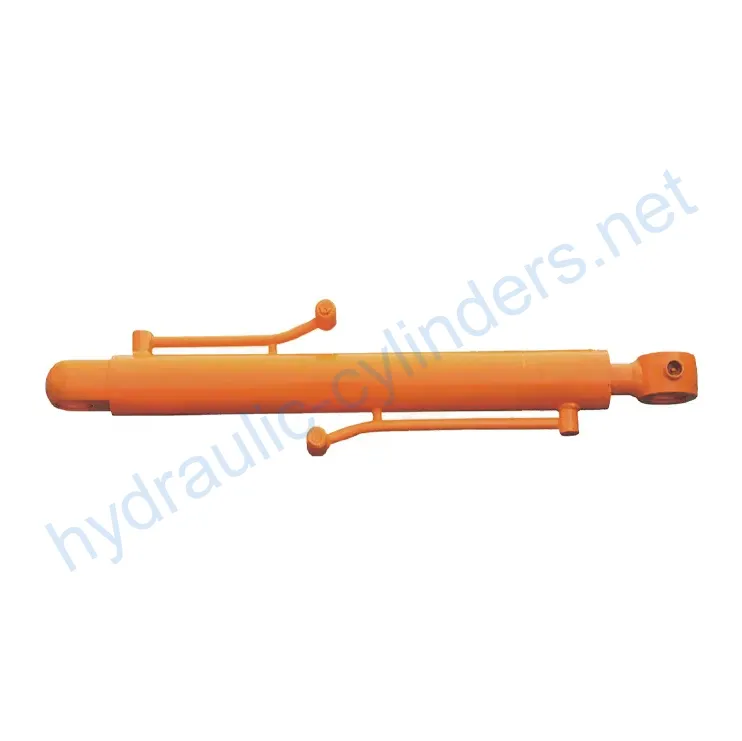Boom Cylinder For Caterpillar Small Excavator E312D
유압 실린더 제조업체, 공급 업체 및 기계 제품 수출 업체 중 하나로서 유압 실린더 및 기타 여러 제품을 제공합니다.
자세한 내용은 당사에 문의해 주세요.
메일:sales@hydraulic-cylinders.net
유압 실린더 제조업체 공급 업체 수출.
Boom Cylinder For Caterpillar Small Excavator E312D
Product Overview
The Boom Cylinder for Caterpillar Small Excavator E312D is an essential hydraulic component designed to control the movement of the excavator’s boom. This hydraulic cylinder plays a critical role in the hydraulic system, enabling the boom to lift, lower, and tilt, thus facilitating various material handling tasks. A bucket cylinder, or boom cylinder, is specifically engineered for heavy machinery, allowing operators to efficiently manage excavation and lifting operations.
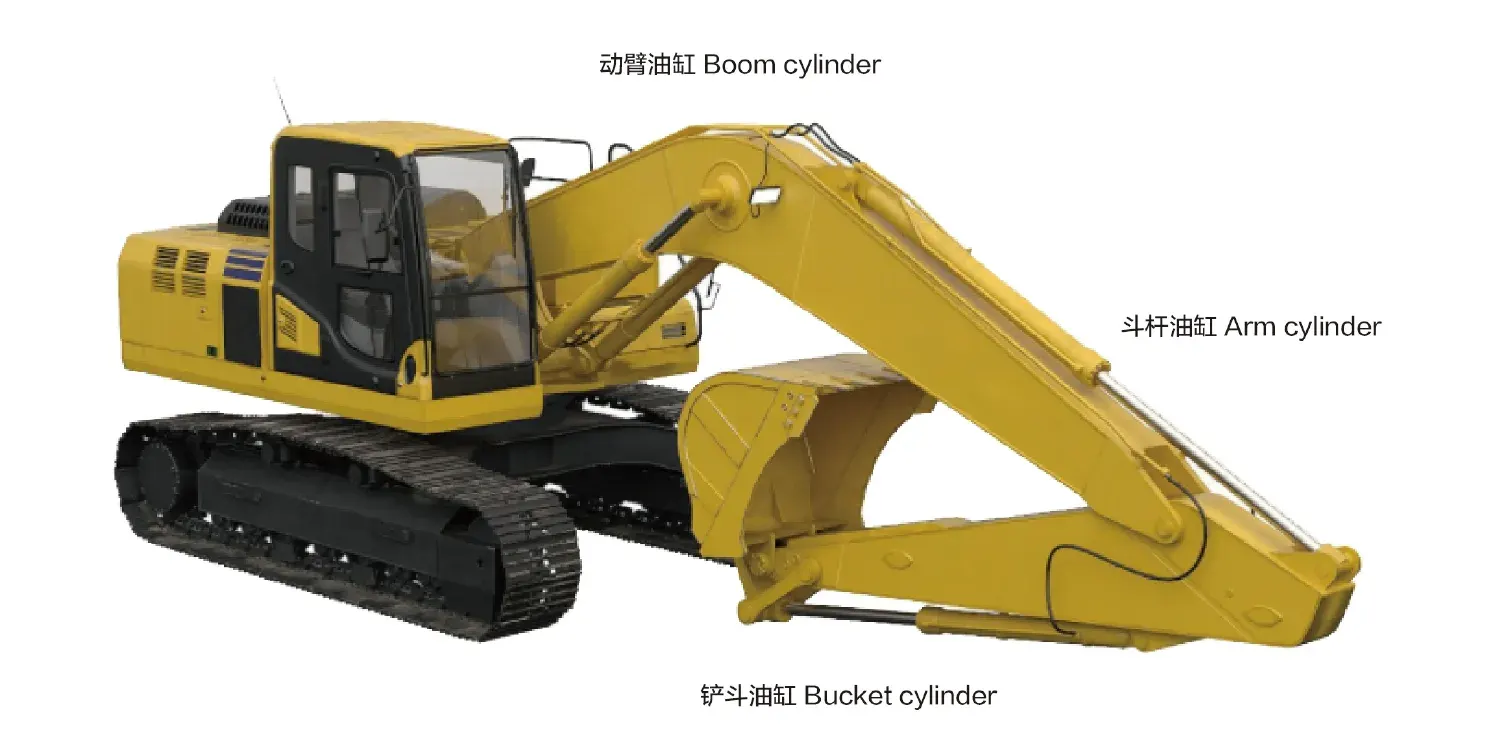
Definition and Functionality
Bucket cylinders, commonly found in excavators, backhoe loaders, and front loaders, are hydraulic cylinders that are crucial for controlling the motion of the bucket. These cylinders are designed to withstand high pressures and heavy loads, ensuring that they can operate effectively in demanding environments. The primary function of a boom cylinder is to provide the necessary force to lift and lower the bucket, allowing for precise excavation and material transport.
Features of the Boom Cylinder
- High Strength and Durability: Typically made from high-strength steel or aluminum, these cylinders can withstand high pressure and heavy loads, making them suitable for harsh working conditions.
- Efficient Hydraulic Operation: Utilizing hydraulic oil pressure for smooth extension and retraction, they respond quickly to control commands, providing significant push and pull force ideal for handling heavy materials.
- Diverse Types: Available in both single-acting (operating in one direction) and double-acting (operating in two directions) configurations, with some models featuring telescopic designs for greater reach without increasing external size.
- Corrosion Resistance: Designed with wear resistance and anti-corrosive properties to extend the lifespan of the cylinder, ensuring reliable performance over time.
- Customizable Options: Our cylinders can be tailored to meet specific operational requirements, ensuring compatibility with various excavator models.
Applications of the Boom Cylinder
Construction Equipment
In excavators, the boom cylinder is vital for digging, loading, and moving soil or debris. The hydraulic force generated by the cylinder enables the bucket to penetrate the ground effectively, making it easier to excavate even tough material. Additionally, in backhoe loaders, the cylinder assists both in digging operations and lifting tasks, enhancing overall productivity on the construction site.
Agricultural Machinery
In front-end loaders, the boom cylinder is used for scooping, lifting, and transporting soil, hay, and other materials. The hydraulic cylinder allows for efficient loading and unloading operations, which are essential in agricultural settings where timely and effective material handling is crucial for farm operations.
Excavator Applications
The bucket cylinder in excavators facilitates the digging action by allowing the bucket to penetrate the soil easily. This capability is fundamental in various excavation tasks, whether for landscaping, mining, or construction purposes. The powerful hydraulic mechanism ensures that operators can accomplish deep digs with precision and control.
Loader Operations
In front loaders, boom cylinders aid in lifting and dumping loads effectively. The hydraulic system enables smooth operations, helping to lift materials to significant heights and deposit them accurately, which is especially important in construction and material handling tasks.
Design Considerations and Selection Criteria
Load Capacity
When selecting a boom cylinder, one of the primary considerations is its load capacity. The cylinder must be able to handle the maximum weight it will be subjected to during operation. This factor is critical as it ensures the safety and efficiency of the equipment. Manufacturers typically specify the load ratings for their cylinders, allowing operators to choose the right equipment for their needs.
Sealing Mechanisms
Effective sealing is vital for preventing hydraulic fluid leaks and ensuring optimal performance. The design should include high-quality seals, such as piston seals and rod seals, made from durable materials like polyurethane or nitrile rubber. These seals must withstand high pressures and provide resistance against wear and abrasion, thereby enhancing the cylinder’s longevity.
Durability
Durability is a key factor in the design of boom cylinders. They are subjected to extreme conditions, including temperature fluctuations and exposure to dirt and debris. The materials used in construction should be robust and resistant to corrosion, which can degrade performance over time. A well-designed boom cylinder will have undergone rigorous testing to ensure it can endure the demands of its operational environment.
Safety Features
Safety should be paramount in the design of hydraulic cylinders. Features such as pressure relief valves can prevent overloading, while proper mounting configurations can ensure stability during operation. Attention to safety standards and certifications is essential in the manufacturing process to safeguard users and equipment.
Maintenance and Repairability
Ease of maintenance is another critical design consideration. The cylinder should allow for straightforward access to seals and components for regular checks and replacements. Consideration should be given to how often maintenance tasks are necessary and how easily parts can be replaced. A design that prioritizes repairability can significantly reduce downtime and costs associated with equipment failure.

Sealing and Lubrication
Proper sealing and lubrication are crucial for the efficient operation of boom cylinders. Various sealing components, including piston seals and rod seals, should be used to prevent hydraulic fluid leaks. Seals made from wear-resistant materials like polyurethane and nitrile rubber are recommended. Additionally, the cylinder body and threaded ends should undergo precision machining to enhance wear resistance. Regular lubrication with hydraulic oil is necessary to minimize friction and wear, ensuring smooth operation and extending the service life of the cylinder.
Regular Inspection and Preventative Maintenance
- Regular Inspections: Schedule routine inspections to check for signs of wear, leaks, or damage to the cylinder. Early detection of issues can prevent more significant problems.
- Lubrication: Ensure that hydraulic oil levels are adequate and that lubrication is performed regularly to keep seals functioning properly and reduce friction.
- Seal Replacement: Over time, seals may degrade and require replacement. Regular checks will help identify when seals need to be changed to maintain performance.
Installation Guidelines
Proper installation of the boom cylinder is essential for optimal performance and safety. Begin by ensuring that the work area is clean and free of debris. Align the cylinder correctly with the existing mounting points on the excavator, utilizing appropriate mounting brackets to secure the cylinder in place. Ensure that all hydraulic connections are properly made, avoiding any cross-threading or leaks. It is also critical to follow the manufacturer’s specifications for torque settings and installation procedures to ensure safe and effective operation.
Common Maintenance Tasks
- Regular Inspections: Conduct regular checks for leaks, damage, and wear on the cylinder. This is essential to maintain operational efficiency and safety.
- Proper Lubrication: Regularly lubricate the cylinder with hydraulic oil to reduce friction and prevent wear on seals and moving parts.
- Seal Replacement: Monitor seals for wear and replace them as needed. This is vital to prevent hydraulic fluid leaks, which can lead to equipment failure.
Safety Considerations and Environmental Factors
When using hydraulic cylinders, safety measures are paramount. Operators should be trained to recognize the importance of following safety protocols, such as wearing appropriate personal protective equipment and adhering to guidelines for safe machine operation. Moreover, environmental considerations should be taken into account, ensuring proper disposal of hydraulic fluids and maintenance of equipment to minimize leaks and spills that could harm the environment.
Troubleshooting and Common Issues
- Leakage: A common issue with hydraulic cylinders is leakage, which can result from worn seals or damaged components. Regular inspections can help identify and rectify leaks promptly.
- Performance Issues: If the boom cylinder is not responding properly, it may indicate a problem with the hydraulic system, such as low fluid levels or air in the lines. Addressing these issues quickly is essential.
- Overheating: Excessive heat can adversely affect hydraulic systems, leading to seal failure and reduced efficiency. Monitoring temperature and ensuring proper fluid levels can help prevent overheating.
Fault Handling Tips
To effectively diagnose and resolve issues with the boom cylinder, operators should follow a systematic approach. Begin by checking fluid levels and inspecting for leaks. If performance issues arise, it is essential to assess the hydraulic system for any blockages or air pockets. Implementing preventative measures, such as regular maintenance and timely replacements of worn components, can significantly reduce the likelihood of future problems.
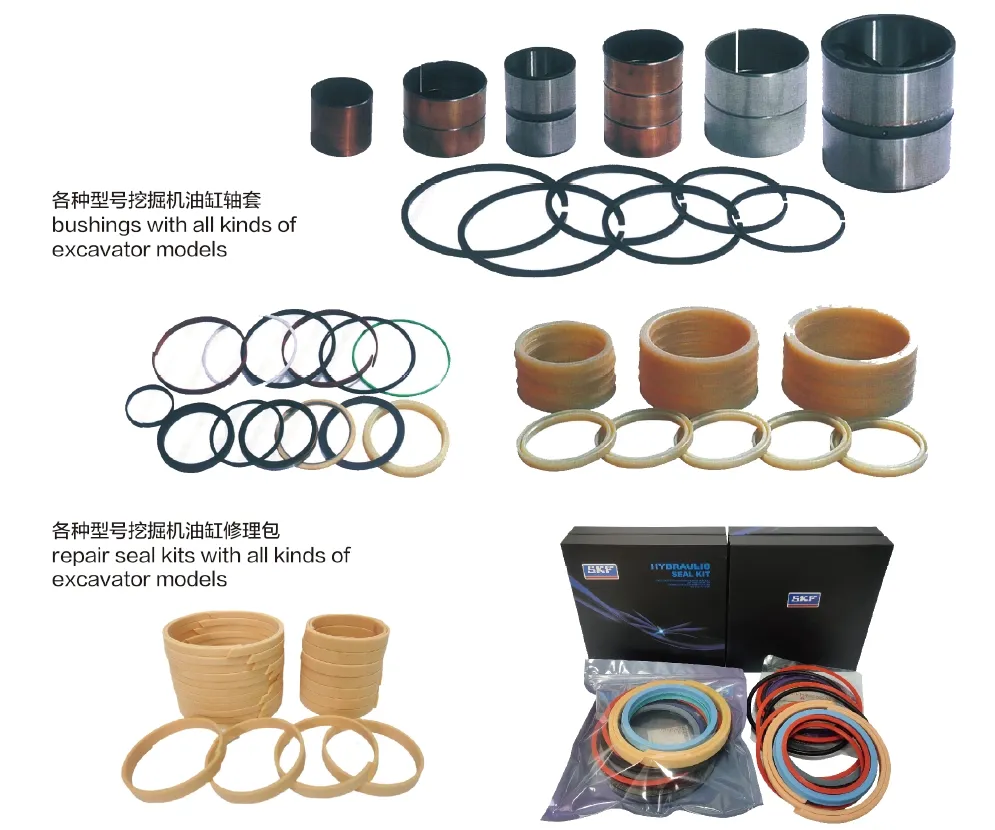
About Our Company
We are a leading manufacturer of replacement hydraulic cylinders, providing a comprehensive range of products in both domestic and international markets. Our commitment to excellence is reflected in our meticulous manufacturing processes and the use of advanced technology. We invest in high-end digital manufacturing equipment and professional testing systems to enhance our production capabilities. Our goal is to meet diverse customer needs with high efficiency, precision, and quality.
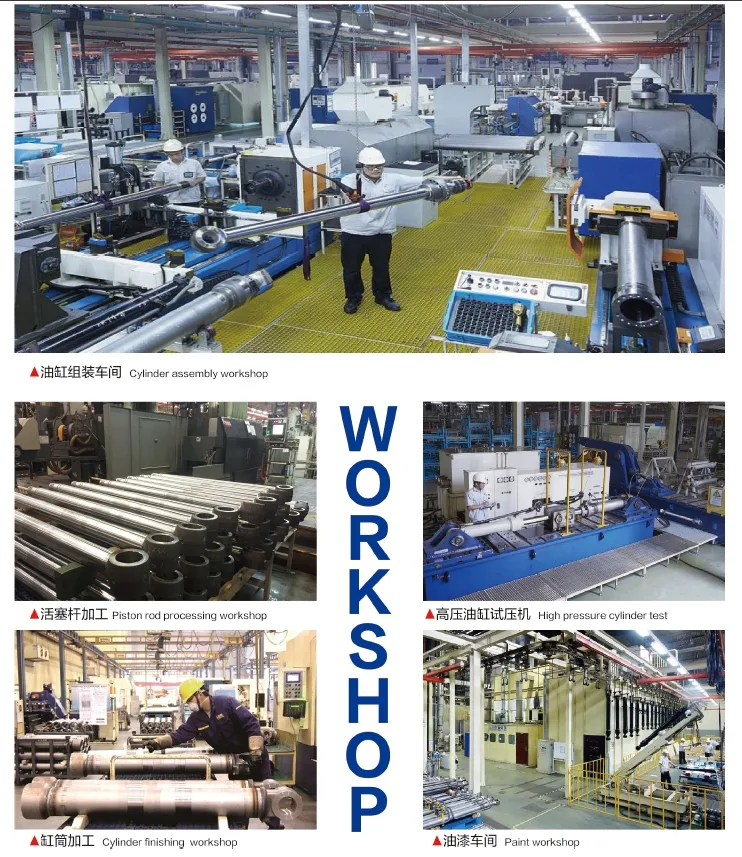
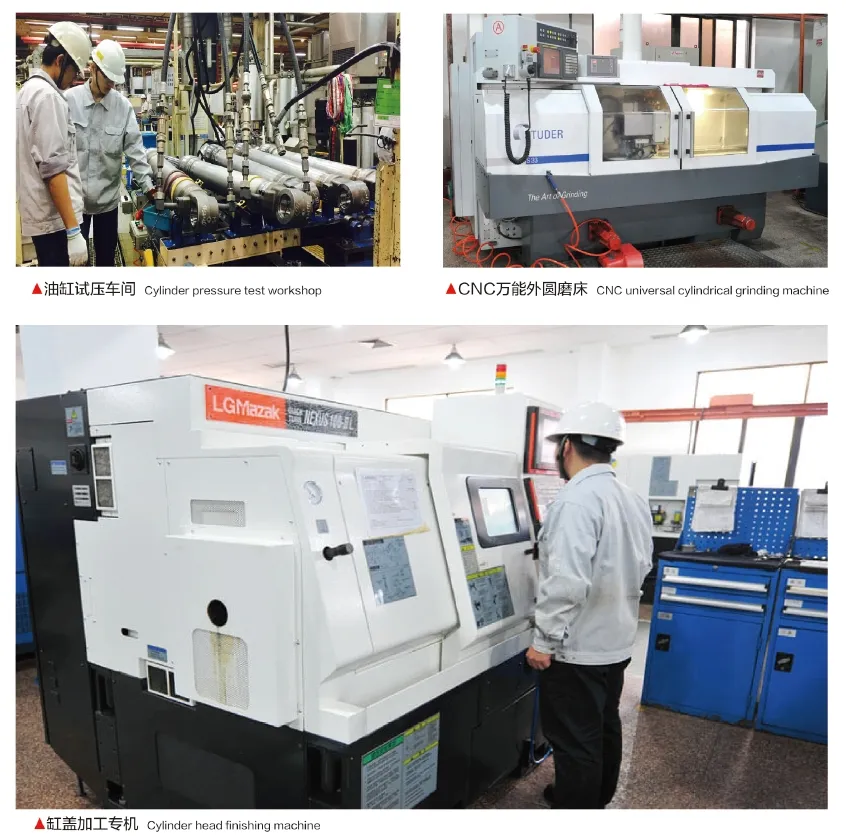
Conclusion
In summary, the Boom Cylinder for Caterpillar Small Excavator E312D is a vital component that enhances the operational capabilities of excavators. Understanding its features, applications, and maintenance requirements can significantly improve its performance and lifespan.
Author: lyl
Take a Tour of Our VR Factory:
Take a tour of our VR factory with the following
Hydraulic Cylinder Application:


